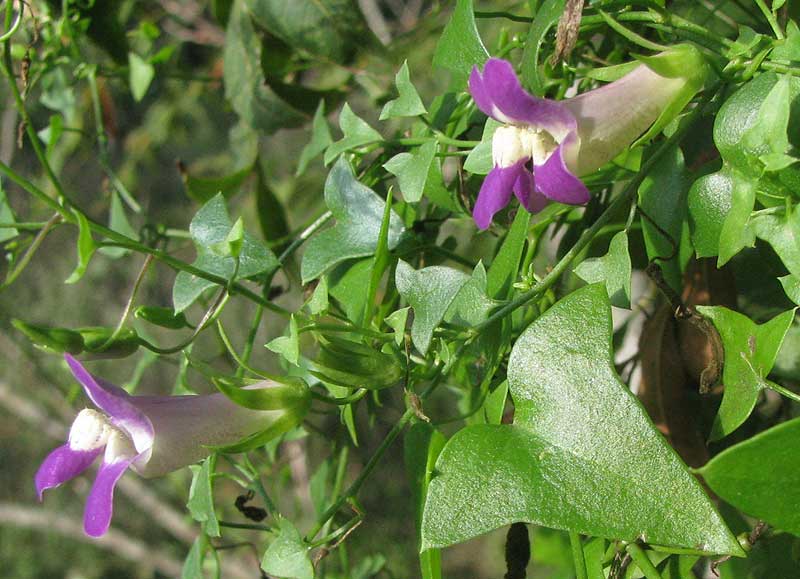Excerpts from Jim Conrad's
Naturalist Newsletter

from the the October 7, 2012 Newsletter issued from the valley of the Dry Frio River in northern Uvalde County, southwestern Texas, on the southern border of the Edwards Plateau; elevation ~1750m (~5750 ft); N29.62°, W99.86°; USA
SNAPDRAGON VINE
Nowadays a certain herbaceous vine climbs and twines into bushes and trees along the river's edge and other places forming dark, dense tangles of stems and shiny, thumbnail-size, ivy-like leaves. Its purple and white flowers, a little over an inch long
(27mm), are bilaterally symmetrical and look like snapdragon flowers, as you can see above.
The vine's fruits are capsular, which means that they are dry, composed of more than one chamber, or carpel, and that at maturity usually they split along one or more "lines of dehiscence." You can see one below:

This is such a common, conspicuous and pretty vine that it goes by several English names, including Snapdragon Vine, Snapdragon Maurandella, Vine Blue Snapdragon and Violet Twining Snapdragon. It's MAURANDYA ANTIRRHINIFLORA*. Traditionally it's been assigned to the Snapdragon Family, the Scrophulariaceae, but lately those folks who look at DNA to determine the real relationships of things have shredded that poor family, so now Snapdragon Vine finds itself with those homely little plantains, genus Plantago, who with their broad leaves and tiny flowers grow weedily along northern footpaths. It's hard to imagine any relationship between these very dissimilar plants, but who can argue with DNA?
Snapdragon Vine occurs mostly on limestone in arid northern and central Mexico, but comes into the US desert Southwest from southern California to here.
The vine is pretty enough to be sold as a garden flower. It's handsome on trellises but doesn't tolerate cold weather.